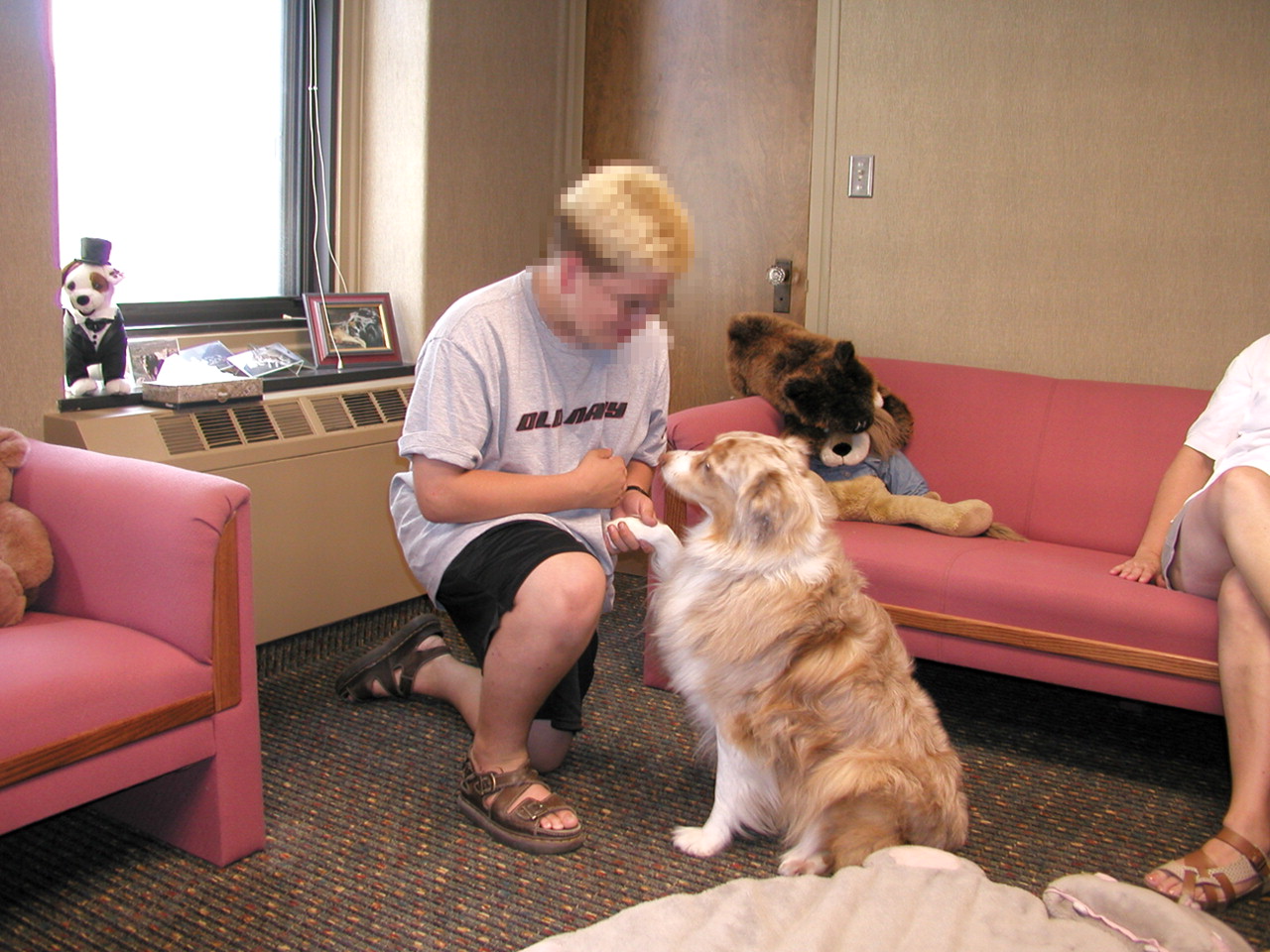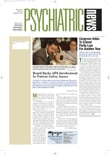Is therapy going to the dogs? Yes, says child psychiatrist Rachel Fleissner, M.D., who uses trained Australian shepherds to interact therapeutically with children diagnosed with psychiatric disorders.
Fleissner, in private practice in Fargo, N.D., spoke about animal assisted therapy (AAT) and her therapy dogs at the October annual meeting of the American Academy of Child and Adolescent Psychiatry.
“About 16 psychiatrists participated in the breakfast session. Most of them used dogs, cats, rabbits, and horses to assist them in therapy with children,” said Fleissner.
She explained that AAT involves goal-directed interactions between a therapist, patient, and an animal. “This differs from animal assisted activities (AAA) in which owners take their pets to nursing homes and day-care programs where the residents can pet and socialize with them,” said Fleissner.
Although horses have been used therapeutically with psychiatric patients in Europe since the 1700s, their therapeutic uses have only caught on in the United States during the last century, according to Fleissner. “Children and adolescents learn to ride the horses and care for them, which establishes responsibility, respect, and trust.”
She used horses therapeutically with children with histories of abuse and conduct disorders at a horse ranch in Tucson, Ariz. “When I established an office-based practice in Fargo about five years ago, I switched to using Australian shepherds because they were more practical and mobile,” said Fleissner.
She prefers using dogs in therapy with children rather than cats because dogs are more trainable and less “high maintenance.”
“Cats and rabbits are more suited in general for AAA than AAT. Birds can be trained for AAT in residential treatment settings to build self-esteem and a sense of responsibility through being cared for,” said Fleissner.
Dogs Used for ADHD
Gwyn and Clara, aged 2 and 8, respectively, are Fleissner’s Australian shepherds. Clara and Gwyn are constant fixtures in her office-based practice and accompany Fleissner on her visits to an inpatient/outpatient clinic and residential treatment facility in Fargo.
“During the eight years I have used therapy dogs, I have discovered many useful roles for them with my patients,” said Fleissner.
For example, she uses the dogs to teach behavioral modification techniques to children with attention-deficit/hyperactivity disorder (ADHD) and their parents. “Children with ADHD are used to being yelled at by their parents, who understandably become frustrated with their behavior,” said Fleissner.
“I use the dog to show how it responds to being yelled at—she looks sad and doesn’t respond. Then I say to the child, ‘Look how Clara responds when we call her by name.’ The child then whispers, ‘Clara come here,’ and the dog obeys,” said Fleissner.
“The parents watching this interaction witnessed their child becoming more attentive and less impulsive. They learned indirectly that changing their tone of voice and body language elicits more constructive responses from the child.”
Dogs Read Body Language
Because Australian shepherds are “sight dogs,” they are masters at reading body language, said Fleissner.
“When a mother and child came for a session recently, Gwyn spontaneously came over to the mother and put her head on her knee and paw on her lap,” said Fleissner. “The mother burst into tears. She told me that she had put the family dog to sleep a few days ago. Gwyn picked up her sadness and spent the entire session sitting next to her on the couch,” she recounted.
The interaction between Fleissner’s dogs and children with severe autism appears beneficial as well. “These children are uncomfortable with human emotions and physical contact, but they will be affectionate with Clara or Gwyn and learn to call them by name eventually. We don’t know yet whether these learned behaviors will translate into improved human interactions,” said Fleissner.
The dog must have the right temperament to interact with children and must be predictable, reliable, and controllable. “It doesn’t work if the dog is territorial or can’t tolerate rough treatment from children without retaliating,” said Fleissner.
“The dog handler must also be predictable, reliable, and controlled to have a successful partnership with the therapy animals,” she added.
She recommended that the dog handler be the owner. “I am their primary caretaker and monitor their needs constantly. I also am responsible for ensuring they don’t bring any infections with them into medical facilities, and I carry microbial foam spray with me. I also keep up-to-date records on the dogs including their shots and licenses and carry group liability insurance in case of accidents,” said Fleissner.
She recommended that interested therapists buy dogs certified as “Good Canine Citizens” by national AAA/AAT organizations such as The Delta Society and Therapy Dogs Inc. This certifies that the dogs have the right temperament and can take surprises in stride, such as sudden changes in movement or a child dropping candy on the floor,” said Fleissner.
To complete the training, Fleissner recommended that the therapist visit an animal behavioralist with her dogs to understand how they think and behave.
Fleissner recommended the publication Standards of Practice in AAA and AAT published by The Delta Society. It can be purchased for $20 on the Web site www.deltasociety.org.
A book Fleissner recommended is The Handbook on Animal Assisted Therapy by Aubrey Fine, which can be purchased at major bookstores. ▪

